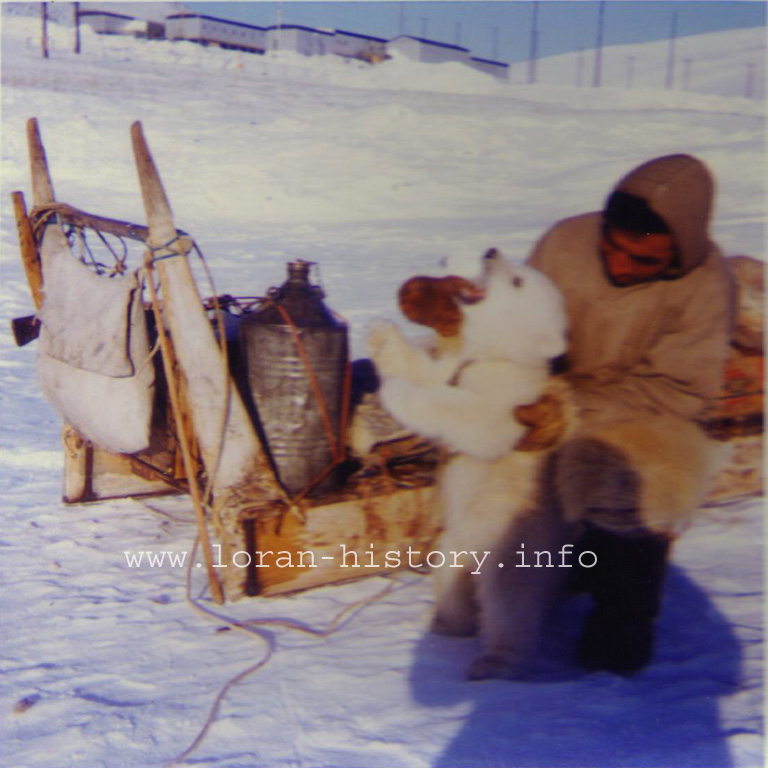
Tom Leary 1968-69 photo collection
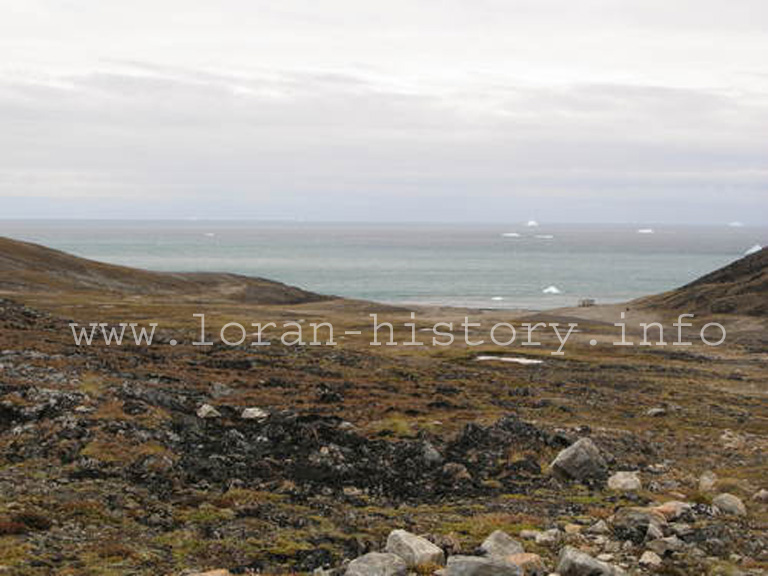
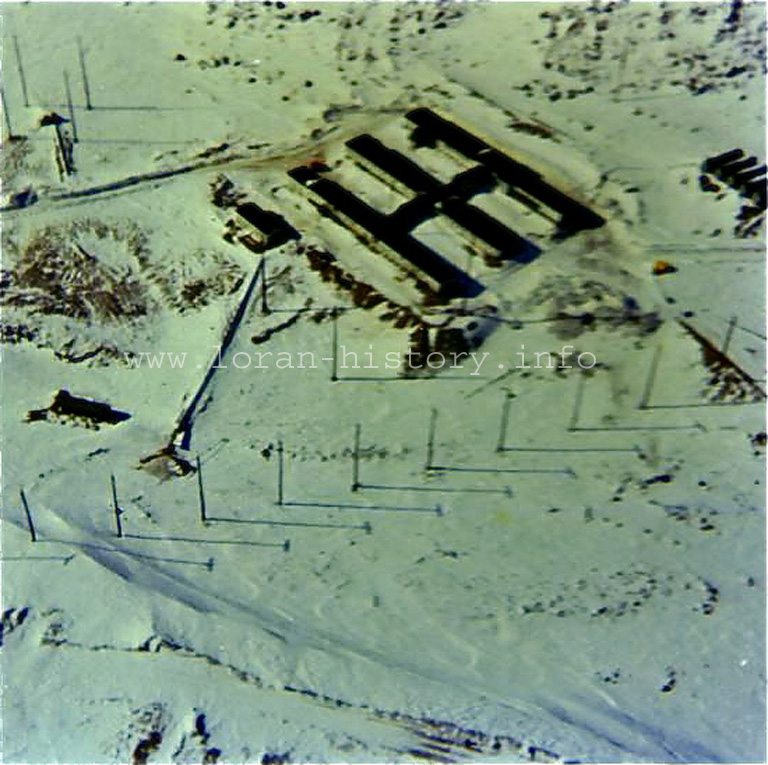
Photo of the station taken from a Thule-based USAF ARS helicopter.
The station was resupplied from Thule Air Base by helo approximately once each month. In addition, two or three times during the year, USO shows were brought from Thule to perform at Cape Atholl. Usually, the USO shows were comprised of college kids who seemed to regard us as somewhat primitive due to our environment, and also probably due to our strange behavior upon seeing young attractive women.
The helicopters also provided for emergency medical evacuation, which I don't recall that we needed during my 68-69 stay. Sometimes we were fortunate enough to get a weekend "liberty" to Thule Air Base. When we did, we partied heavily at the NCO club with USAF personnel, RCA BMEWS employees and Danes.
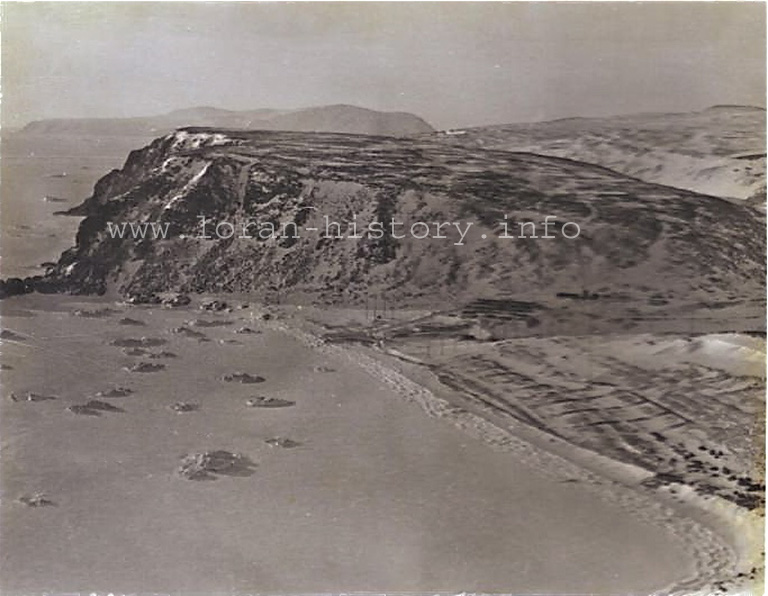
Photo was taken from atop the mountain to the south of the station, so the direction of this picture is almost south to north. Thule was located about ENE, or to the right. As I remember it was about 40 miles away.
Although we preferred traveling to Thule by helo, we did have an M-37 truck and a couple of tracked vehicles that made the trip to Thule several times during my year long stay. It was a very rough ride that took several hours and we had frequent breakdowns and weather problems to contend with.
Aside from Thule, the only contact we had was with Eskimos who stopped by the station as they travelled by the area on dog sleds. Once, in the summer, when the ocean was thawed, I remember a couple who came via a small power boat. There were still icebergs drifting by. Another time an icebreaker made a stop to resupply us. Which one it was I can't recall, but I imagine at least one CG icebreaker stopped at Thule for about a week each year and briefly at Cape Atholl Loran Station.

This photo was an official USCG photo of the station taken in 1955.
Not much change had occurred by 1968 when I arrived.
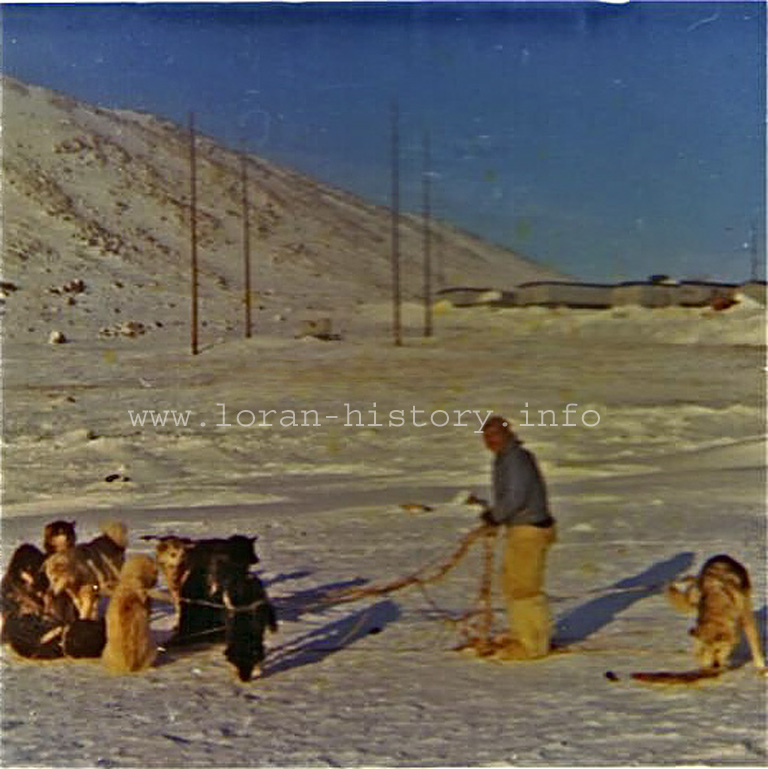
Eskimos frequently stopped by the Loran station.
This man, wearing the polar bear pants
and sealskin boots was
working to untangle the sealskin leads for his sled dogs.
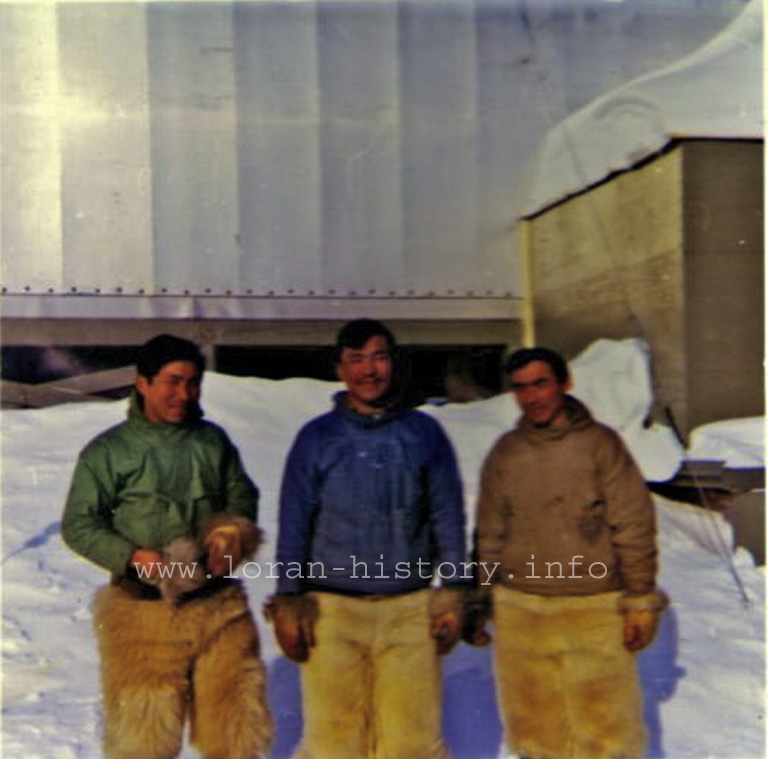
The eskimos were very hearty and resourceful. These three men were on the way to a polar bear hunt.
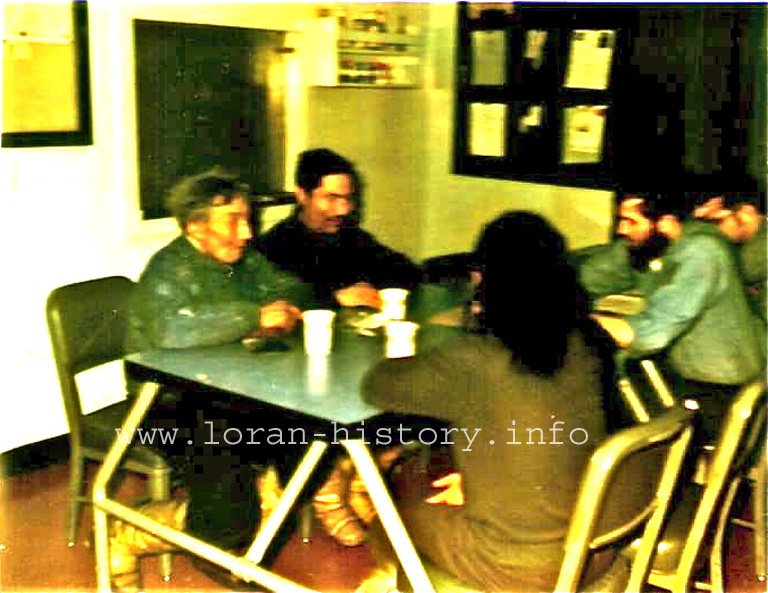
The visits of the Eskimos provided those of us at the CG station
with a unique opportunity to
interact with a race of people that
most of the world only hears about. Several of our Eskimo
visitors
claimed to be descendants from early Polar explorers,
including Robert Peary and
Matthew Henson.
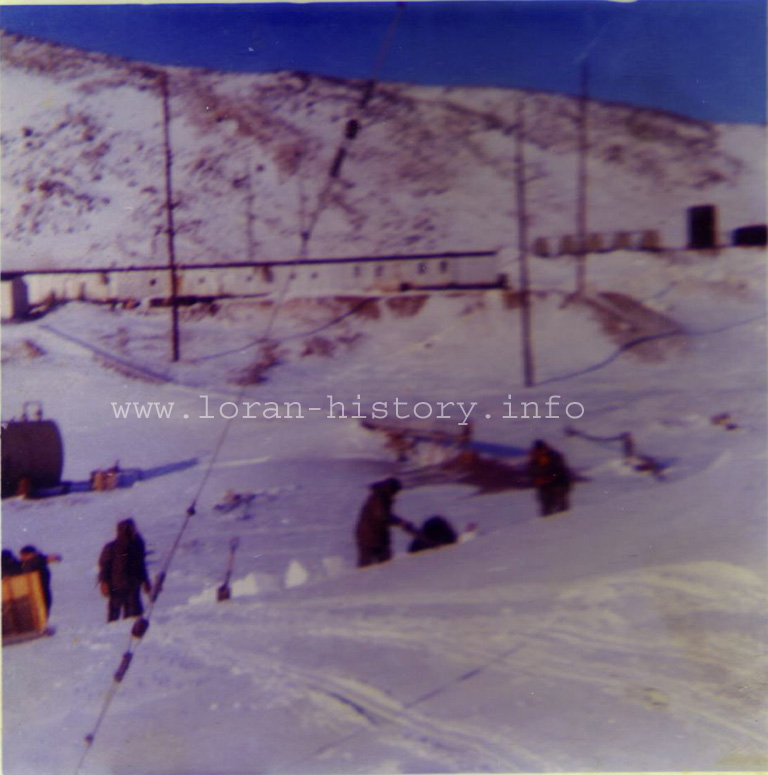
Since there was limited water. Whatever was used for laundry was collected and re-used to flush the toilet after use. Showers were rationed and limited water use was the general rule at the station. The toilet waste line was routed to a large pipe that was directed away from the station to a culvert where water ran during the summer thaw. The outflow end of pipe was elevated and during most of the year everything was frozen so there was a long icicle of waste frozen off the end of pipe. We called it a “poopcicle.”
This Eskimo hunter stopped by the station as he returned from a polar bear hunt. His companions had already passed through with the skin and meat from their trophy bear, and he stopped to show us the orphaned cub. It was his intention to trade the young bear with the Danes , who would perhaps be interested in selling the cub to a European zoo.

This was my opportunity to be as close as any of us would ever get to a polar bear during my time at Cape Atholl.
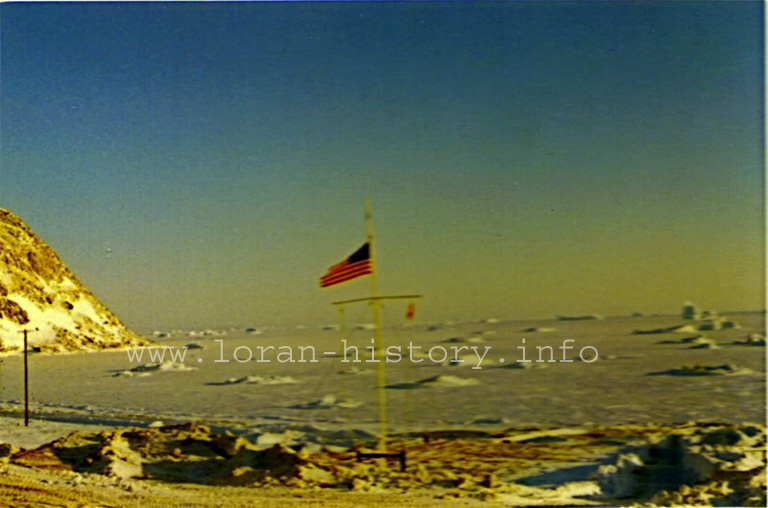
Early spring of 1969, the ocean still frozen. Some daylight allowed us to see beyond the immediate vicinity of the station. This picture was taken on the day we heard of the death of former President and American General Dwight D. Eisenhower. With the flag at half staff, we looked toward the south in acknowledgment that we had lost a great national leader.
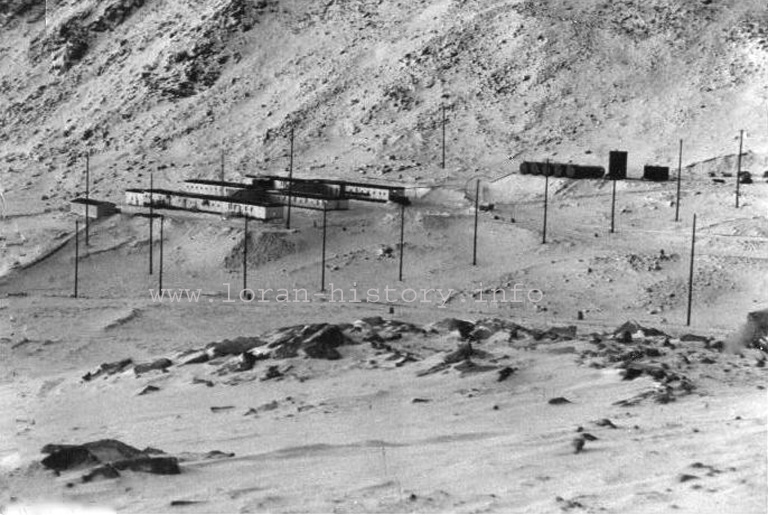
1968 Season Greetings card (front)
Thanks Tom!
Return to Cape Atholl web page
